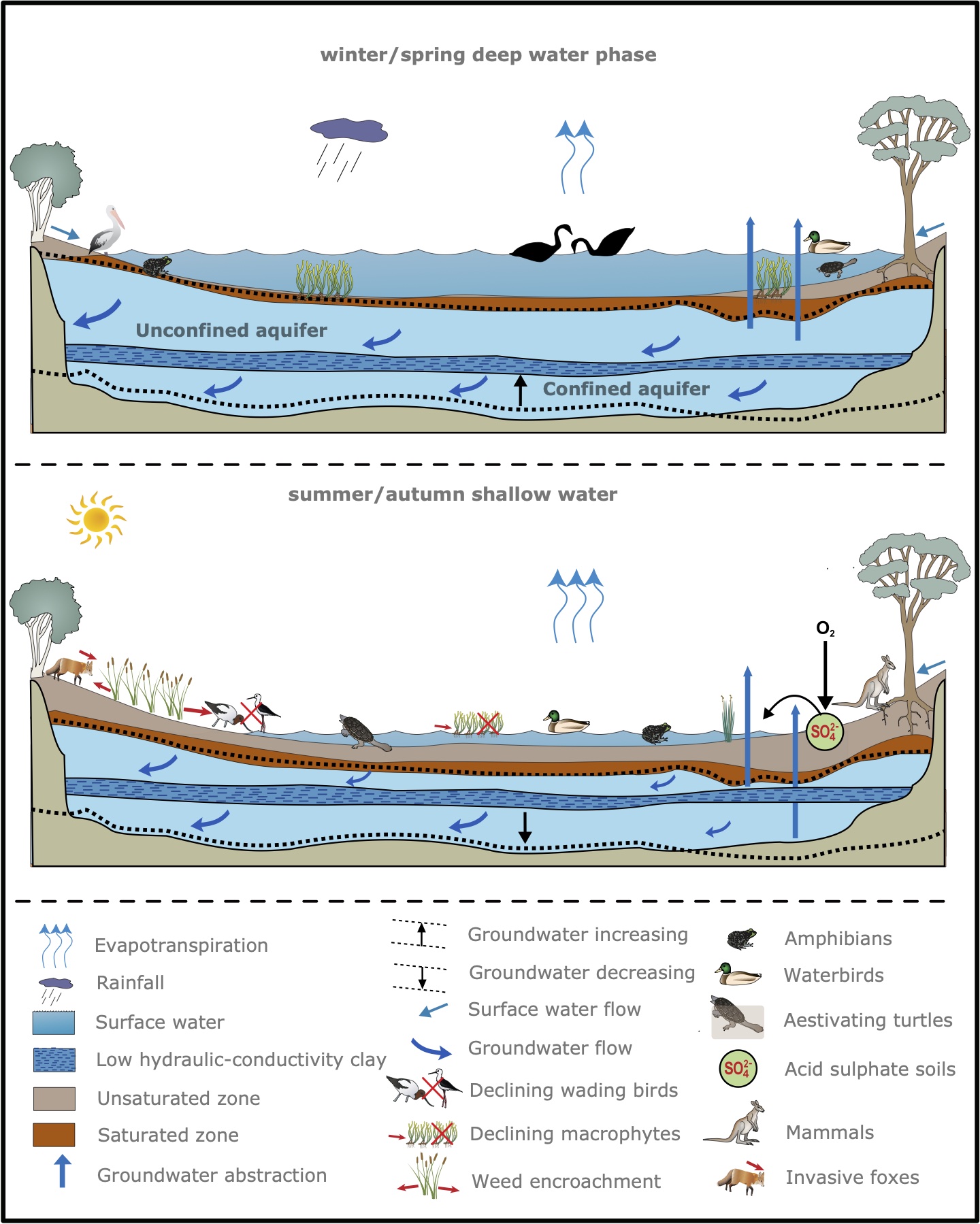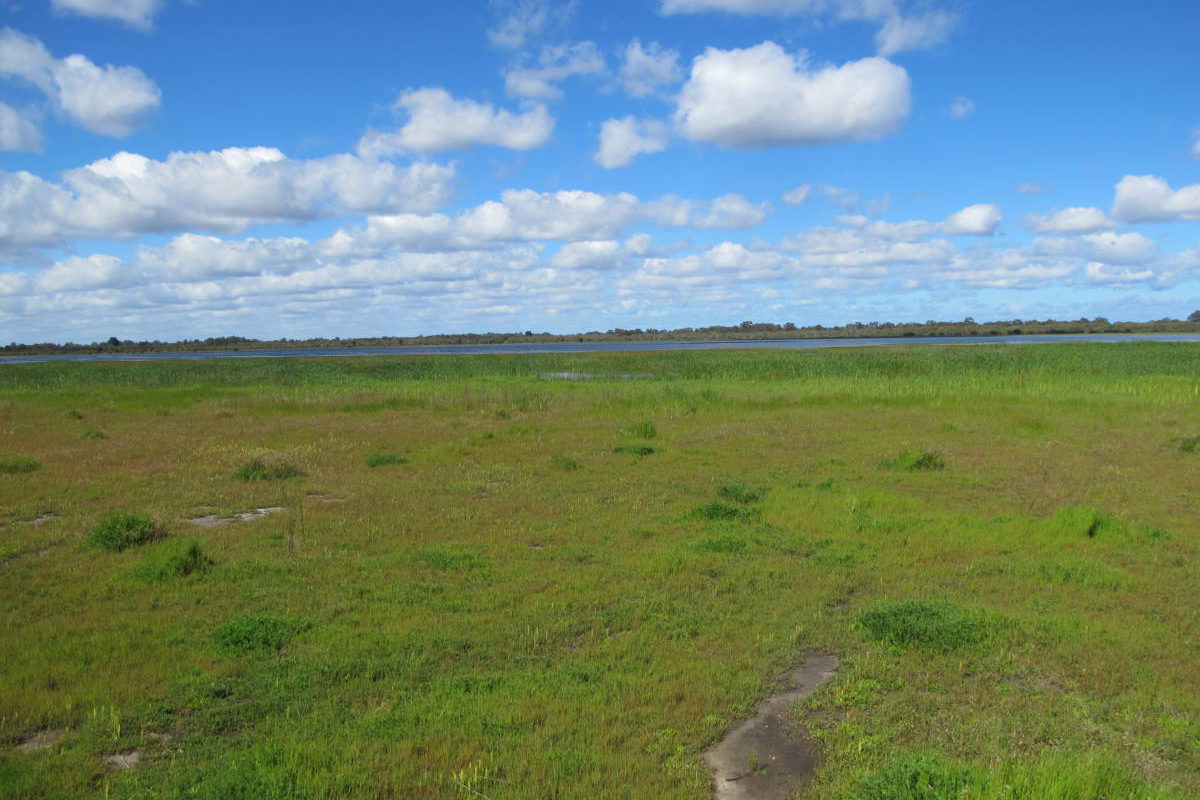How the Swan Coastal Plain Wetlands slowly dry up – which actions can turn the tide?
In Perth, Western Australia,🇦🇺 some of the most beautiful wetlands can be found. The wetlands are one of the most diverse areas and support a wide range of flora🌱and fauna🦘. However, climate change🔥has lead to prolonged droughts and urgent action is required.
What is the fuss?
In a recently published artice (Nanda et. al. 2021) we found that:
① current wetland management is not sufficient to protect them. Stakeholders in our study co-develop several adaptive actions.🗣
② water availability in summer is the largest constraint and surface/groundwater tables are too low to sustain large population of migratory birds.🐦
③ Frequently drying of the wetland is favourable for invasive species (fox, bulrush) and leads to further decline of native plants and animals.
What did we find?
① it is important to address the role of each stakeholder when nature protection measures are proposed: Each stakeholder has different responsibilities and has to comply to different laws.
② Not all implications of each measure was understood. So we respresented the wetland in a figure (an eco-hydrological conceptual representation). Such a simplified representation makes it easier to understand how action A leads to an effect B.
For example: The weeds make it more difficult for wading birds to look for food, but they do provide good nesting places for the water birds. AOn top of that, removing invasive weeds exposes the topsoil to sunlight and causes the soil to acidify (not good). So which measure do you choose?

The representation of the wetland case study area (Source: Nanda et. al. 2021)
③ Some protections measures also need legislative changes.🎓
For example: A limit to groundwater abstraction on private properties located directly adjacent to the wetland causes a slower decline in the water table and thus benifits the wetland. However, to do this, a very old law must be changed by the Western Asutralian Parliament.
And now what?
① Future climate projections point in a direction in which the wetland cannot keep all its functions (For example: water availabilty for water birds in summer). So wetland managers must choose which species can still be protected. Or maybe choose to collect rain water from the planned new neighbourhoods and redirecting this water into the wetlands.
② Continue stakeholder engagement so that legislative changes can be fast forwarded. It also provide a good platform to have nature protection measures that have support from all stakeholders. And then end up being implemented.
The final key message🔑 is not to look at each individual action you could take and only looking for long term solutions.
It is more about looking at all the actions and the impact of the whole ecosystem, both for actions you can take on the short and long term.
This was text is written for a wider audience and is part of my science communication work. For the free accesible scientific publication, please go here.
Special thanks to: Leah Beesley, Luca Locatelli, Berry Gersonius, Matt Hipsey and Anas Ghadouani.
For questions please contact me.
